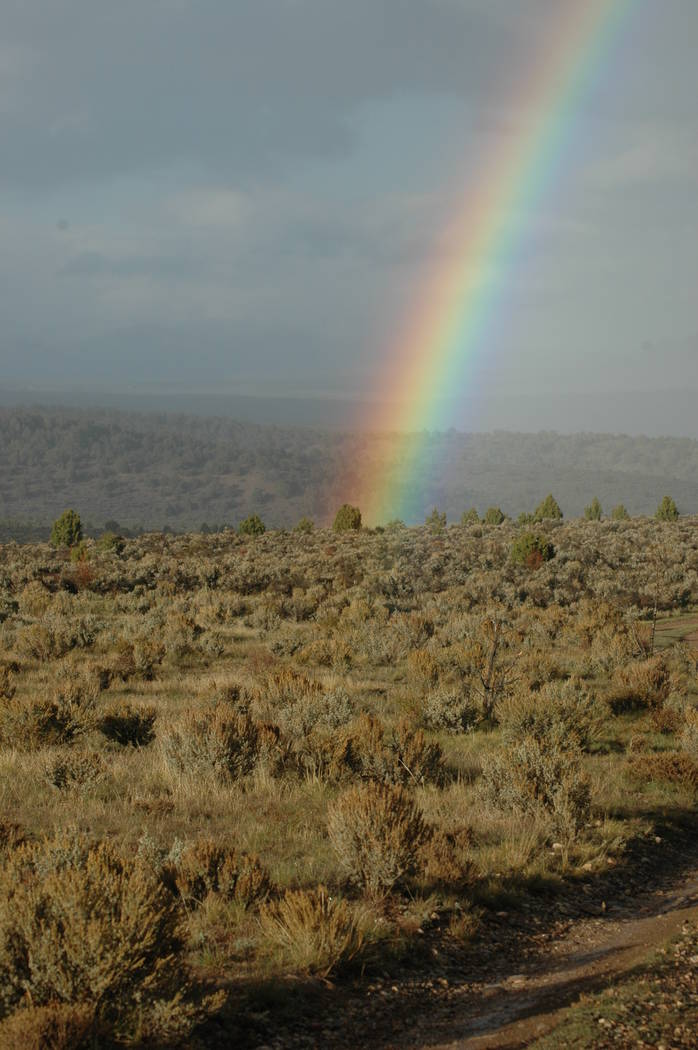Uneven weather conditions make game hunting unpredictable


The 2018 mule deer hunting season is a week old today, and so far, hunters have experienced a mix of weather conditions ranging from warm to cool and from dry to wet as storm systems pass through central and northern Nevada.
In some places, they have even seen snow sticking at upper elevations. Not heavy accumulations at this point but enough that hunters planning trips between now and early November season should plan for the possibilities. That means packing gear for conditions ranging from warm and dry to cold and wet.
While it’s easy to recognize the impact of weather changes on us, we don’t always think of its impact on the game we are hunting. A mistake that can cost us the chance to fill our tags.
For the past few years, October and early November have been unseasonably warm, and that has made finding game a challenge for many hunters.
Keep in mind that big game animals spend their spring and summer months packing on as much fat as they can. Their entire focus is on preparing first for the rigors of the rut and then for the cold winter months that lay ahead. That extra fat is their insulation layer, not unlike the coat you put on when it’s cold.
When it is warm, however, you can remove your coat, but a deer or elk can’t shed the extra fat. Instead they seek out the coolness of a shady spot in a stand of trees, below a steep cliff face or even in tall sagebrush. Oftentimes that need for shade limits the amount of time the animals spend in the open.
During an early November elk hunt in 2016, for example, it was so warm that my friends and I only saw elk during the first 15 minutes or so of daylight. Then they seemed to vanish as they retreated to their secluded shady spot.
Mule deer bucks often bed where they can see a lot of country and still have quick access to an escape route. Or where the breeze can help keep flying bugs at bay. Places such as a mahogany-covered point or the base of pinyon pine high on a hillside often fill that bill.
The opposite also is true. When temperatures begin to cool, the animals will spend more time up and moving, making them easier to find.
Wet weather is another time mule deer will seek cover, especially if rain is falling in more than a slow drizzle. The same is true during a heavy snowstorm.
One year during deer season, a steady rainstorm sent my friends and me looking for cover. So, we drove into town for a burger and extra groceries. On the way back to camp we took the opportunity to drive through some new country. During that foray we spotted a large bull tucked beneath the cover of a wide juniper tree. The tree’s boughs formed a natural umbrella that provided the bull with some protection from the rain.
Not far from there, the road passed close by a thick pine tree whose limbs grew close to the ground. As we passed the tree, the truck’s mirror hit a branch or two. Suddenly a mule deer doe ran from the bottom of the tree, but she was not alone Another six or seven deer soon followed. Like the bull, they had sought cover from the rain by hunkering down at the base of the tree.
This behavior is something I have witnessed many times over the years and will often take place during a heavy snowfall as well.
When rain disrupts your hunt, don’t forget that rain eventually stops. And when it does, be ready to go to work. Animals that have been hunkered down will leave cover to move around and to feed. Country that looks devoid of game can suddenly come alive during a break in inclement weather.
This also is a good time for hunters to move because the rain will rehydrate dry leaves and help to reduce the noise one makes while stalking through dry brush.
Heavy snows can create real safety issues for hunters, but a couple of inches of the white stuff can be a big help. Mule deer whose grey coloring provides excellent camouflage can be clearly seen against the white snow. So too can the tawny brown coat of an elk.
While weather can put a hitch in our plans, it also can be a big help. The key is knowing how to use it.
Freelance writer Doug Nielsen is a conservation educator for the Nevada Department of Wildlife. His “In the Outdoors” column, published Thursday, is not affiliated with or endorsed by the NDOW. Any opinions he states in his column are his own. He can be reached at intheoutdoorslv@gmail.com .












